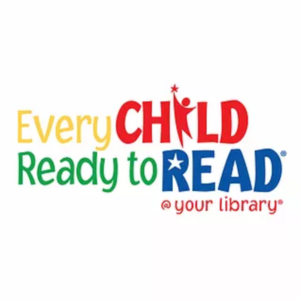
More than ten years ago, the Public Library Association (PLA) and ALSC Association for Library Service to Children) jointly launched Every Child Ready to Read @ Your Library® (ECRR), an evidence-based parent education initiative. Through ECRR training and resources, there has been a field-wide shift in early literacy programming in libraries, with a focus on using ECRR to engage, educate, and empower parents to help their children become ready to read.
From the beginning, PLA/ALSC have continually assessed and improved the program. ECRR is based on current brain development research and has become a model for public libraries to train parents, caregivers, teachers, and librarians in the six pre-reading skills and five early literacy practices.
Every Child Ready to Read was reevaluated over a three-year time frame and the report, published in 2017, indicated that implementing the program caused libraries to rethink their décor and layout of children’s spaces to promote family engagement, expand their programs to include a wider variety beyond storytime, and have a broader understanding of early literacy in general. They also found that it could be hard for librarians to get the parent engagement they were seeking at programs, understand how to include parental asides in meaningful ways during programs, or translate the five practices into more than just “sound bytes,” due to their own lack of knowledge or discomfort at not being trained in child development. Further, libraries in many areas were still struggling to attract parents to programming or other events– particularly parents who may have inconsistent work schedules, transportation, or trust in public service institutions.
Researchers from the iSchool at University of Washington completed an extensive, qualitative study to attempt to answer a question most librarians believed to be true from experience, but had not been studied: does what we do in storytime make a difference in the early literacy skills of children who attend? In the first part of the study, Valuable Initiatives in Early Learning that Work Successfully (VIEWS2) showed a correlation between the early literacy content delivered in storytimes and children’s early literacy behavior. Researchers then wanted to know if they could increase the impact through training, and again, they found that with training, storytime providers offered more early literacy content and children showed increased early literacy behaviors. Based on those results, Supercharged Storytimes was developed. Through Supercharged Storytimes, the followup Supercharged Storytimes for All, and the self-paced Supercharged Course through WebJunction, training based on VIEWS2 data is available to everyone.
Every Child Ready to Read @ Your Storytime
A key component of Every Child Ready to Read is sharing information with parents and caregivers through handouts and early literacy reminders.
Many libraries find it most effective to add a verbal message for caregivers during storytime. Using reminders that flow naturally into what is already happening in storytime can help make giving reminders easier and more fluid.
Check out some of our favorite Early Literacy Tips and make them your own.
Early Literacy Calendar
Looking for new ways to engage young ones and get excited about Early Literacy? This printable calendar from the Colorado State Library and Growing Readers Together has new activities for every day of the year!
Thinking Critically About Every Child Ready to Read @ Your LibraryⓇ
The reception of Every Child Ready to Read has been largely positive. Evaluation at each phase of the program has indicated enhanced library spaces, programs, and training opportunities for librarians. Furthermore, the results from VIEWS2 indicate that early literacy content delivered in storytime does have a positive impact on the children attending.
Concerns have been raised about some elements of ECRR, however. The definition of research that was used to create the program excluded several types of research, including sociocultural studies, which consider the interaction of culture and individuals. Training on early literacy has opened doors into education spheres for some public libraries/librarians, but some worry that the relationships are not always mutually beneficial. Others wonder by aligning with more and more educational outcomes, are we moving too far away from the unique opportunities a public library can provide?
